10 Items You Shouldn’t Wear on Hot Days If You’re Over 65

Temperatures have been hitting new heights over the past several years. Record-breaking heat waves are becoming more common and hitting earlier than usual across the country. This unprecedented extreme heat is causing rates of emergency department visits for heat-related illnesses to rise significantly as well, per data from the Centers for Disease Control and Prevention (CDC). With that in mind, it’s important to realize that something as simple as making the right clothing choices on hot days can make all the difference in helping you avoid heat stroke—especially if you’re older. Read on to discover the 10 clothing items experts say you should never wear on hot days (and what you should wear instead).
RELATED: 10 Clothing Items You Shouldn’t Wear on a Walk.
Why should people over 65 be cautious about what they wear on hot days?
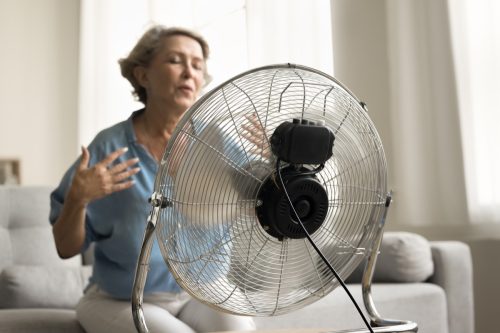
While heat-related illness or injuries can affect anyone, we don’t all have the same risk levels. In particular, people over the age of 65 are more likely than others to experience hot weather-related health concerns, according to the CDC.
“Older adults face substantial risks during the summer season due to the human body’s natural aging process, which can make adapting to temperature changes more difficult,” says Gavin Dawson, PA-C, WEMT, founder of Global Emergency Medics. “These risks are further compounded by pre-existing medical conditions and medications that interfere with the body’s heat response and sweat production.”
Since older individuals are more susceptible to conditions like heat stroke, “what they wear on hot days becomes crucial to help them maintain a stable body temperature and minimize their risk,” according to Daniel Morris, founder and CEO of Senior Living Interviews.
Wondering what to steer clear of? Read on for 10 clothing items, styles, and materials to avoid on hot days if you’re over 65.
RELATED: 4 Drinks to Avoid During a Heat Wave, Experts Warn.
1
Synthetic materials
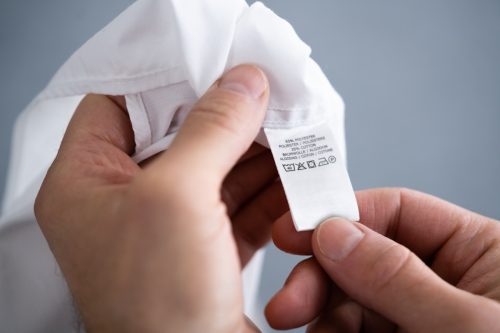
Most synthetic materials do a poor job of absorbing sweat, which can leave you less able to cool down on a hot day. When your sweat sticks around, it can also irritate your skin, leading to prickly heat or similar skin rashes.
“Instead of synthetic materials like polyester or nylon, choose natural fibers such as cotton, linen, or bamboo, which are breathable and wick away moisture, keeping you cool and dry,” suggests Josh Weight, director of the Australian physiotherapy clinic Gravity Physio.
Dawson agrees, noting that “these materials allow optimal airflow, preventing heat absorption and retention that could potentially lead to overheating.”
2
Tight clothes
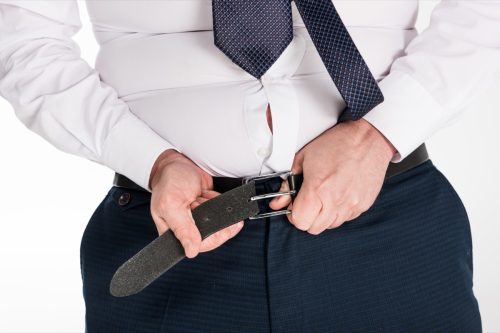
Wearing tight clothing on hot days can hinder sweat evaporation, leading to discomfort and potentially causing you to overheat, Weight cautions. That’s why he advises opting for loose, flowing garments that offer natural ventilation.
Dawson adds that clothes with a relaxed fit enable “unrestricted movement, which proves particularly beneficial for individuals with age-related mobility limitations, reducing the likelihood of injuries.”
RELATED: If You’re Over 65, Don’t Wear These 10 Clothing Items to Exercise.
3
Restrictive socks
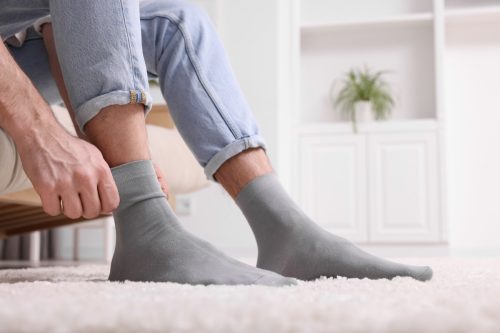
This also rings true for certain types of socks that have tight elastic bands, according to Morris.
“Socks like this can restrict blood flow and increase discomfort in the heat,” he warns.
Raychel Ria, RN, a nurse with over 10 years of clinical and public management experience, goes as far as to suggest that older individuals avoid wearing socks at all when the heat picks up.
“Something that those over 65 often deal with more prominently than those below that age is swelling feet, and the likelihood of swollen feet increases when it is hot out,” she explains. “Breathability is going to be one of the best ways to mitigate swelling.”
4
Closed-toe shoes
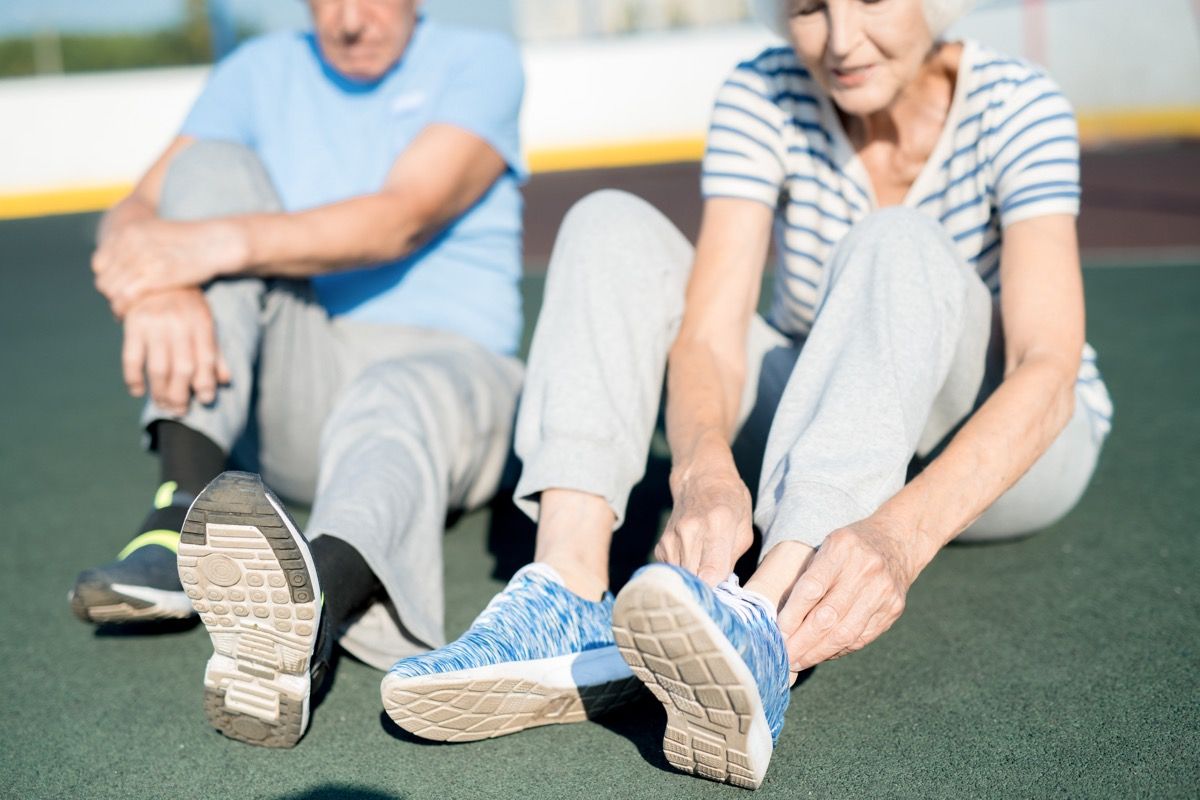
Private practice specialist Ralph Waldo, MD, recommends people over 65 avoid closed-toe shoes altogether on hot days for similar reasons.
“Poor circulation and mobility issues already put seniors at higher risk of overheating, and closed-toe shoes compound this by making it harder for heat to escape,” he says. “Open-toed shoes or sandals made of breathable materials are a much better choice.”
Morris also recommends staying away from footwear made with non-breathable materials like plastic or rubber.
“They can cause feet to overheat and sweat excessively, leading to discomfort and potential skin issues,” he cautions.
RELATED: If You’re Over 65, Don’t Wear These 5 Shoes, Podiatrists Warn.
5
Dark colors

Dark-colored clothing can trap heat rather than reflect the sun’s rays, so wearing these items can also cause you to suddenly overheat.
However, it’s worth noting that dark-colored clothing tends to offer more protection against UV rays than lighter-colored clothing. In fact, according to the American Academy of Dermatology Association (AADA), “a long-sleeved denim shirt provides an SPF of about 1,700, while a white t-shirt provides an SPF of about seven.”
To balance safety and comfort, Weight advises sticking to light-colored clothes in a palette of whites and pastels that are made with materials specifically made to protect against UV rays. You can also put sunscreen on under your light-colored clothing for added sun protection.
6
Skin-baring outfits

Perhaps counterintuitively, it can pay to cover up on hot days when you’re over 65. That’s because most skin cancer cases strike people aged 65 and up, and life-threatening melanoma is most commonly diagnosed in people aged 65 to 74.
“Be mindful of itty-bitty clothing styles that expose too much skin to the sun, as it can increase the risk of sunburn or overheating. Consider wearing loose-fitting, lightweight long sleeves and pants that provide sun protection while allowing airflow,” Weight recommends.
If you do decide to go sleeveless, make sure you choose a sunscreen with a high SPF, and reapply it every two hours.
7
Multiple layers

At the same time, you shouldn’t be putting on multiple layers when it’s hot out either. After all, “layering can increase body temperature and restrict movement,” according to Simon Elliott, founder of the custom clothing brand Clifton.
“This can lead to heat exhaustion and make it difficult for older individuals to stay cool and comfortable,” he notes.
RELATED: If You’re Over 65, Don’t Wear These 5 Clothing Items When Jogging.
8
Thick fabrics
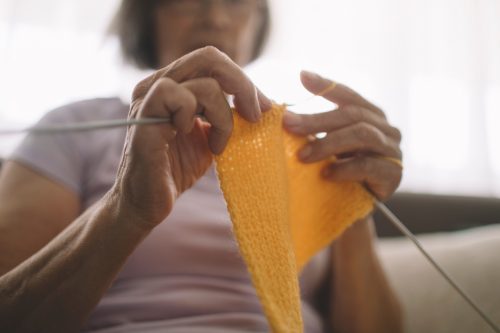
Wearing heavy fabric on a hot day would be uncomfortable for anyone, but seniors have a harder time adjusting to sudden temperature change. With that in mind, Weight says it’s essential to skip heavy fabrics such as wool or polyester on hot days, instead opting for those lighter, more breathable materials.
“These lighter fabrics allow better air circulation, preventing overheating and promoting comfort,” he explains.
9
Heavy or restrictive accessories
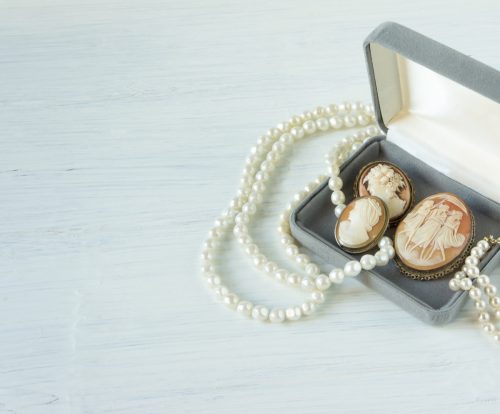
Your heavy accessories should take a backseat during the summer as well.
“These can trap heat and add unnecessary weight, making it harder to stay cool,” Morris warns.
But it isn’t just jewelry you need to be careful with.
“Heavy outdoor accessories like gardening gloves should be avoided, too,” Waldo says. “While protecting hands from the sun is important, heavy duty gloves prevent heat from escaping and make it harder to stay cool. Lightweight, breathable gloves or UV-protective sleeves are better options.”
Restrictive accessories such as tight belts are also a no-go because they “can constrict blood flow and increase body heat,” Elliott adds.
10
Certain hats
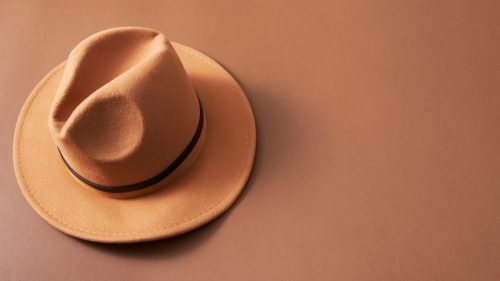
Throwing a hat on during the summer is a good way to keep your skin protected from the sun. But don’t opt to put just anything on top of your head while it’s hot outside.
“Hats made from non-breathable materials, like certain types of felt or leather, can trap heat around the head, increasing the risk of overheating,” Morris cautions.
RELATED: 8 Ways to Safely Exercise When It’s Hot Out, Experts Say.
What should you wear on hot days instead?
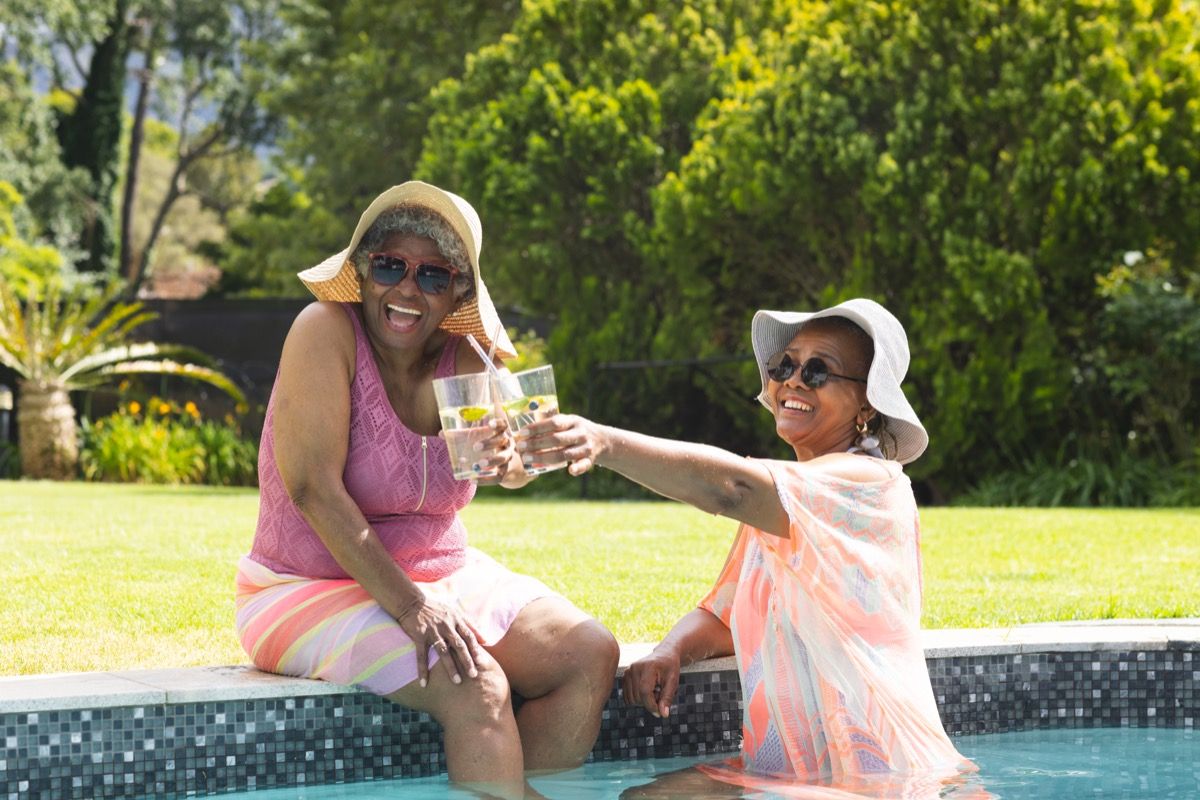
While experts are quick to point out that there are certain clothing items you need to avoid on hot days, there are other options you should always have on hand in the summer months too.
For example, Dawson says you should be sure to utilize sun visors or hats (made from breathable materials), umbrellas, and sunglasses. All of these items provide an additional shield against the sun’s harsh rays.
He also notes that those over 65 tend to have an easier time getting dehydrated, which is why he recommends wearing “a hands-free [water] bottle holder that can be worn like a sling or belt bag.” This way, no matter where you are, you’ll be able to stay hydrated.
- Source: CDC: Heat-Related Emergency Department Visits — United States, May–September 2023
- Source: CDC: Older Adults and Extreme Heat
- Source: Cedars Sinai: Prickly Heat
- Source: American Academy of Dermatology Association: What to Wear to Protect Your Skin From the Sun
- Source: CDC: Many Older Adults Don't Protect Their Skin from the Sun